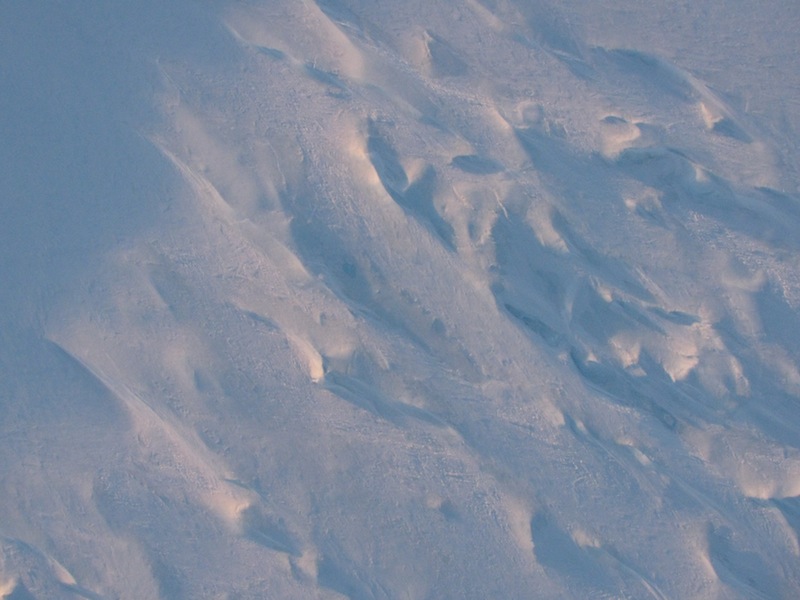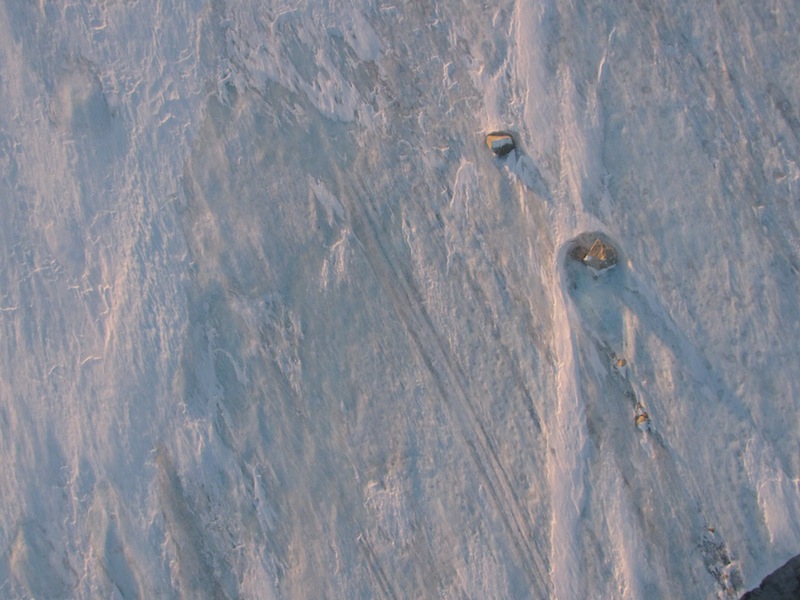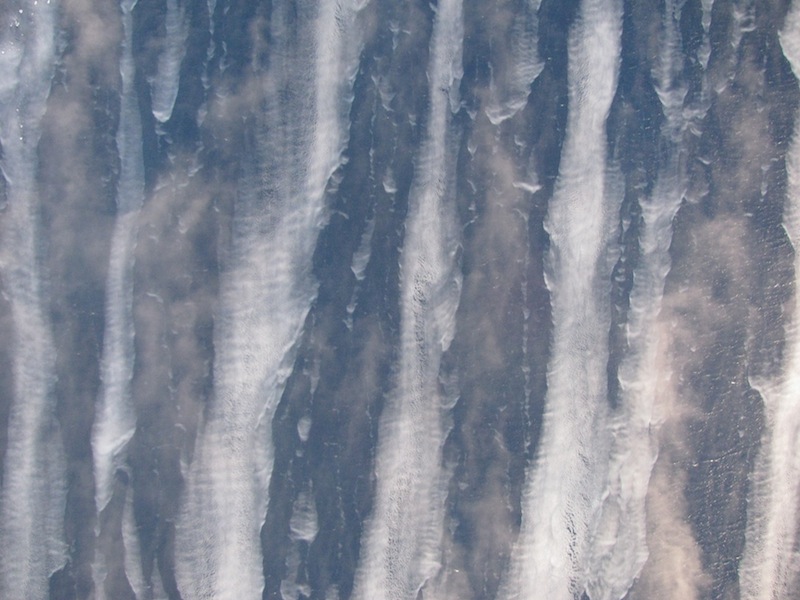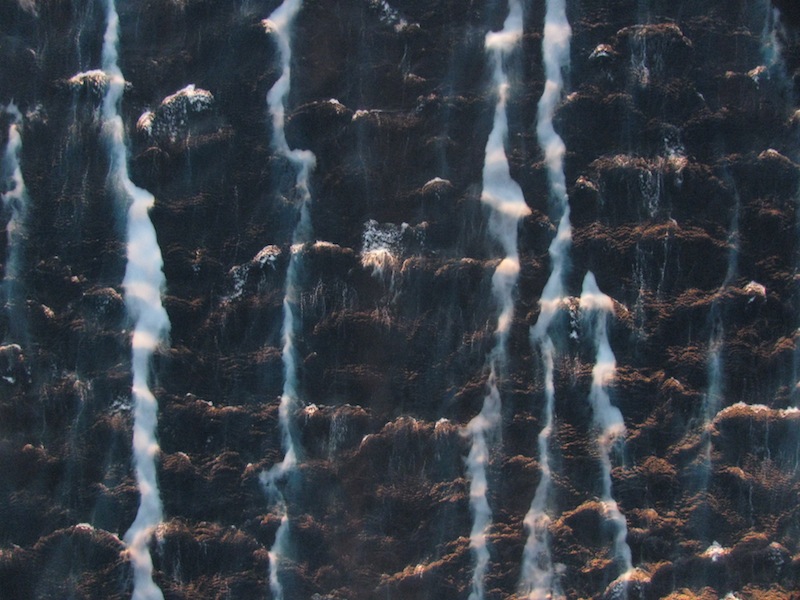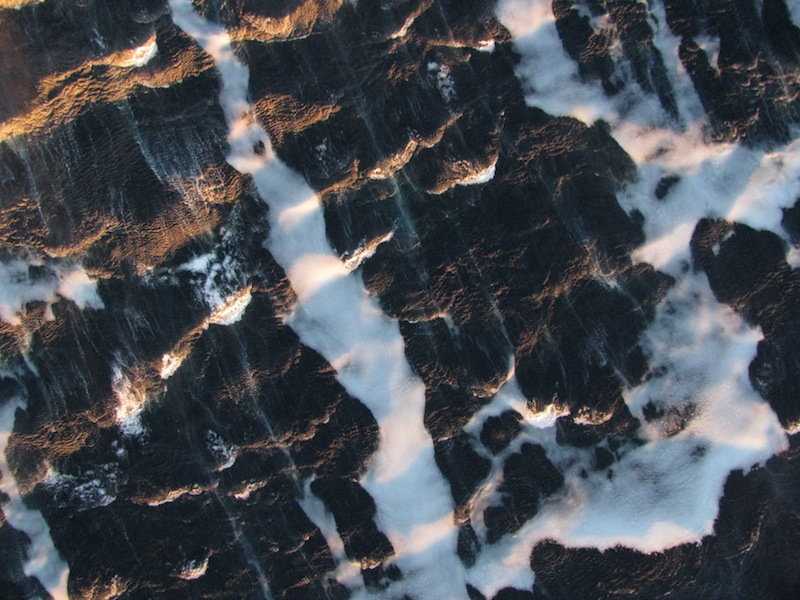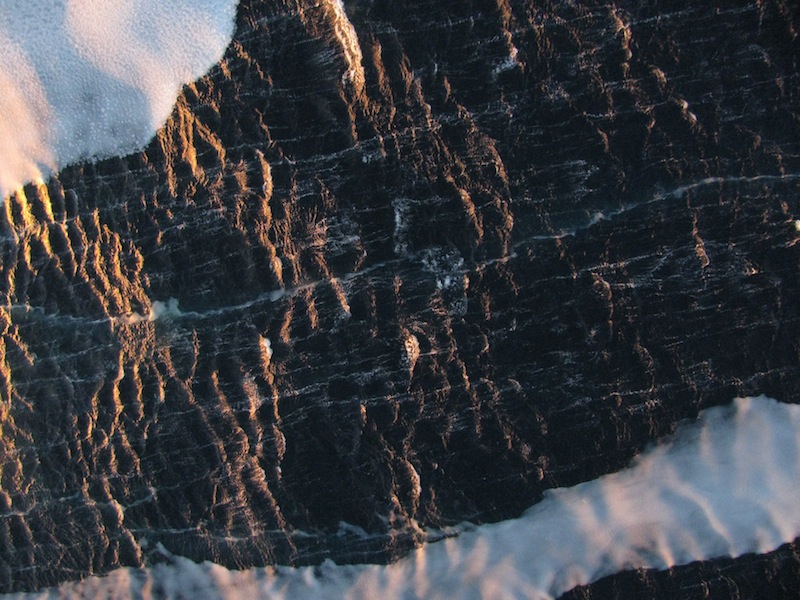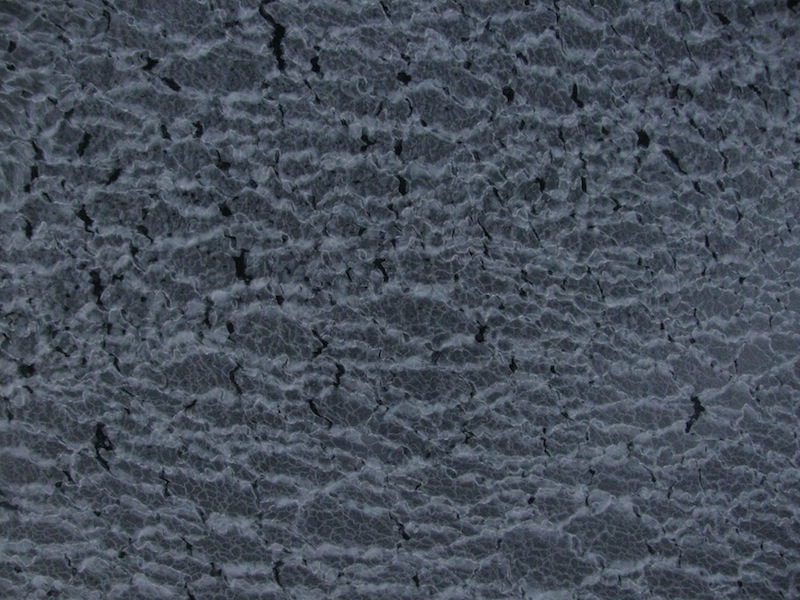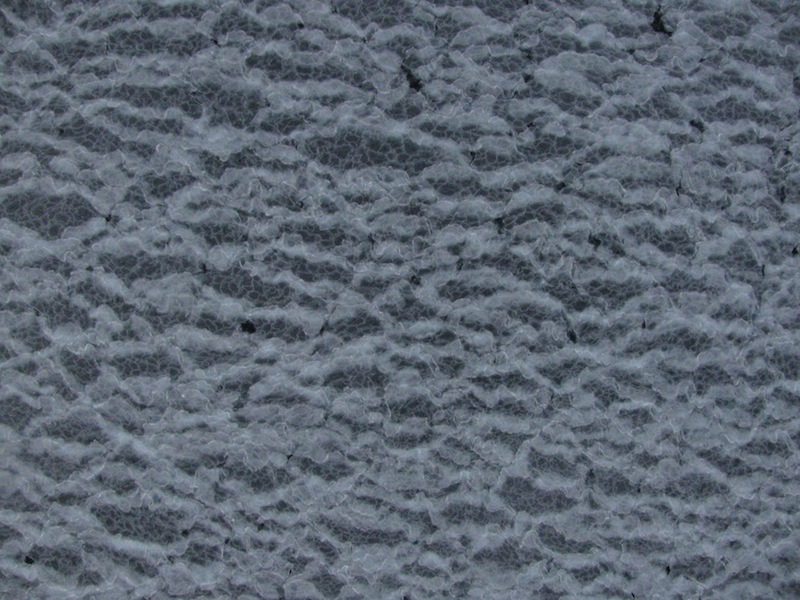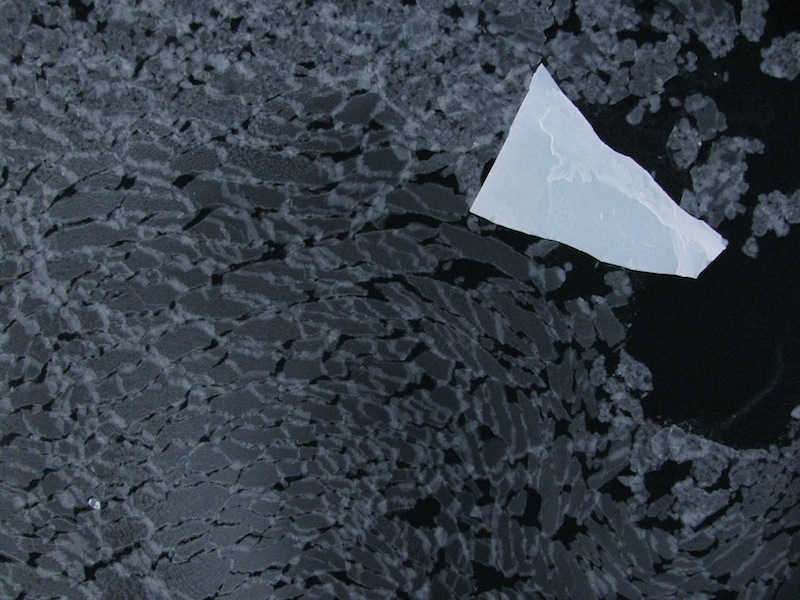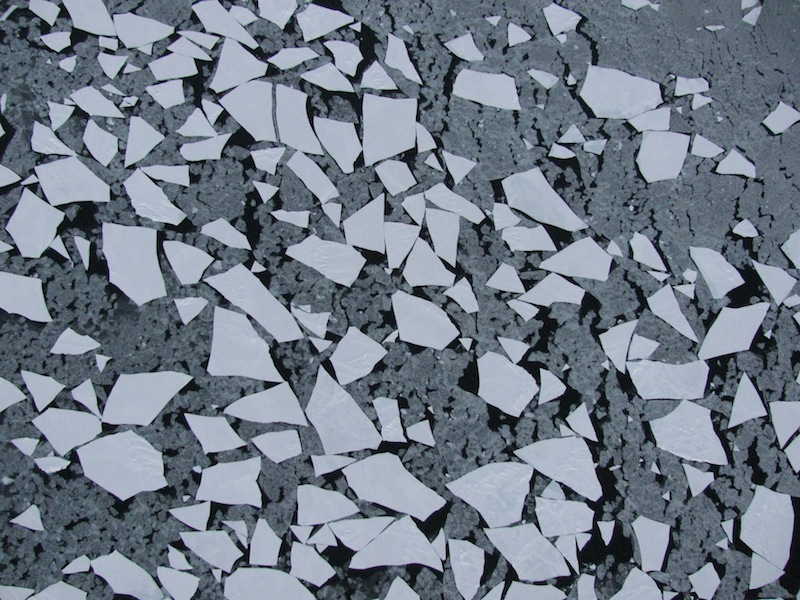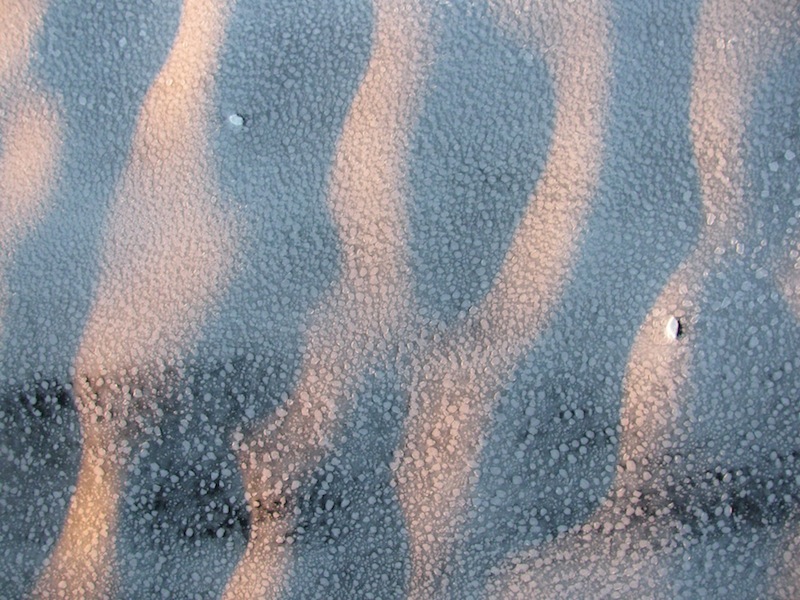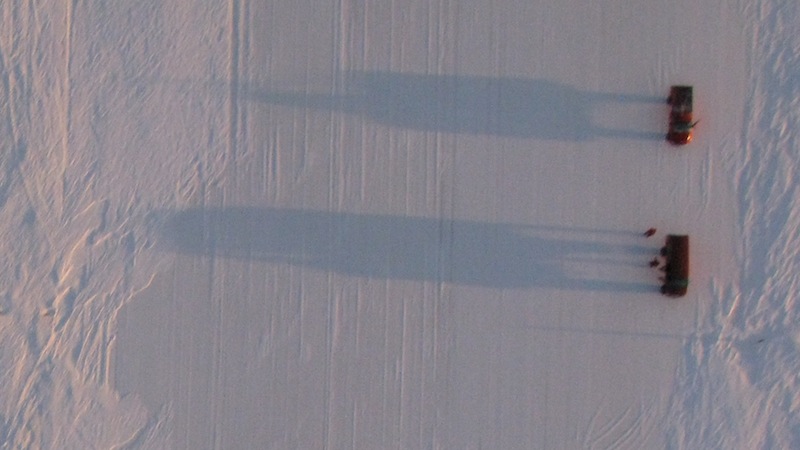The Aerosonde UAVs we flew in Antarctica were equipped with digital cameras that allowed us to take photographs of the ice and ocean we were flying over. Of course, most of our flights were at night so we couldn’t take photographs, but on a few flights we had enough daylight at the start of the flight to take photographs of the polynya. Below is a sample of the variety of conditions we flew over during the last few weeks. Many of these photographs look like abstract art but I’ll try to explain the different features you can see in each photo. To give you a sense of scale, the area covered by these photographs is typically just a few hundred feet across.
As we approached Terra Nova Bay we would fly across permanent floating ice. In the photographs below you can see the snow drifts created by the strong winds blowing over this permanent ice.
The feature we were most interested in observing was the open water in the Terra Nova Bay polynya. The photographs below show the polynya with large areas of open water (dark) and thin bands of newly formed sea ice (white). In the first photograph the hazy appearance is caused by sea smoke (fog) formed as water that evaporated from the ocean condenses in the cold air blowing over the polynya. In all of these photos you can see waves created by the strong winds blowing over the polynya, including whitecaps on some waves and spray being blown downwind from the wave crests.
As the winds become weaker the open water of the polynya begins to freeze. Very thin, newly formed ice is dark in the photographs below while thicker ice is brighter. In this sequence of photographs you can see bands of thicker ice that have formed as the wind squeezes the newly formed thin ice together.
Strong wings can break pieces of thick sea ice (white) away from the main pack ice. In the photographs below angular chunks of thick sea ice are surrounded by newly formed thin ice.
As the newly formed ice continues to grow it forms into round “pancakes” that are about 6 feet across. In the photo below you can see waves propagating through an area of pancake ice.
As the Aerosonde UAVs completed their nightly flights we would take photographs as the plane circled the ice runway before landing. Below you can see our launch truck and van (with two of us standing next to the van) parked on the side of the runway.
We flew north from Antarctica yesterday (1 October). I’ll post one more blog entry in the next few days talking about the trip north.
